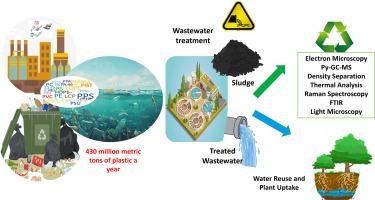Sustainable analytical approaches for microplastics in wastewater, sludge, and landfills: Challenges, fate, and green chemistry perspectives
IF 6.5
Q1 CHEMISTRY, ANALYTICAL
引用次数: 0
Abstract
The effects of microplastics (MPs) in wastewater, sludge, and landfills are analyzed and discussed, focusing on their pathways into the environment. The application of sludge as a soil amendment and the reuse of treated wastewater in agriculture have been further proven to contribute to the introduction of MPs into terrestrial ecosystems. MPs present a capacity to accumulate in plants together with co-contaminants such as heavy metals and pharmaceuticals, posing additional risks to food safety and soil quality. This review underscores the need to align analytical practices with sustainability by adopting environmentally friendly methods. A critical discussion is presented on the analysis of MPs, encompassing an in-depth examination of analytical methodologies, challenges in sample preparation, and potential solutions. Techniques such as Fourier Transform Infrared Spectroscopy (FTIR), Raman Spectroscopy, and Pyrolysis-GC–MS (Py-GC–MS) are highlighted for their effectiveness in MP identification, combined with treatment approaches like density separation, enzymatic digestion, and oxidation. MPs appear in various forms, including synthetic fibers, microbeads, and fragmented particles, with their distribution being influenced by polymer types. Low-density polymers like polyethylene (PE) and polypropylene (PP) tend to remain in the water phase, whereas high-density polymers such as polyester (PES/PEST) and polytetrafluoroethylene (PTFE) accumulate in solid matrices like sludge and sediments. Inconsistencies in measurement units are a significant issue in microplastic analysis. Concentrations are typically reported as items per liter (for water) or items per kilogram (for soil), However, mass-based units such as µg/L are rarely employed, complicating data comparison. Another essential component is the determination of MP size, which is largely dependent on analytical equipment detection limits and resolution. Most studies focus on MPs ranging from 20–50 µm to a few millimeters, with limited research addressing MPs smaller than 0.1 µm, known as nanoplastics (NPs). Lastly, sustainable management approaches for addressing the worldwide problem of plastic pollution will be presented.

废水、污泥和垃圾填埋场中微塑料的可持续分析方法:挑战、命运和绿色化学观点
分析和讨论了微塑料(MPs)在废水、污泥和垃圾填埋场中的影响,重点是它们进入环境的途径。污泥作为土壤改良剂的应用以及处理后的废水在农业中的再利用已被进一步证明有助于将MPs引入陆地生态系统。MPs有能力与重金属和药物等共污染物一起在植物中积累,对食品安全和土壤质量构成额外风险。这一审查强调需要通过采用环境友好的方法使分析实践与可持续性保持一致。对MPs的分析提出了一个关键的讨论,包括分析方法的深入检查,样品制备中的挑战,以及潜在的解决方案。傅里叶变换红外光谱(FTIR)、拉曼光谱(Raman Spectroscopy)和热解-气相色谱-质谱(Py-GC-MS)等技术结合密度分离、酶解和氧化等处理方法,在MP鉴定方面的有效性得到了强调。MPs以多种形式出现,包括合成纤维、微珠和碎片状颗粒,其分布受聚合物类型的影响。低密度聚合物,如聚乙烯(PE)和聚丙烯(PP)倾向于留在水相,而高密度聚合物,如聚酯(PES/PEST)和聚四氟乙烯(PTFE)积聚在固体基质中,如污泥和沉积物。测量单位的不一致是微塑性分析中的一个重要问题。浓度通常以每升(水)或每公斤(土壤)的单位报告,然而,很少采用以质量为基础的单位,如微克/升,使数据比较复杂化。另一个重要组成部分是MP尺寸的测定,这在很大程度上取决于分析设备的检测限和分辨率。大多数研究集中在20-50微米到几毫米的MPs上,对小于0.1微米的MPs的研究有限,称为纳米塑料(NPs)。最后,将介绍解决全球塑料污染问题的可持续管理方法。
本文章由计算机程序翻译,如有差异,请以英文原文为准。
求助全文
约1分钟内获得全文
求助全文

 求助内容:
求助内容: 应助结果提醒方式:
应助结果提醒方式:


